The Q6 series from Samsung is the simplest line of QLED televisions from the Koreans for the year 2024. It stands out for its ease of use and several useful features. Thanks to the Tizen system, which we find in the Q60D, we can easily switch between applications like Netflix and Prime Video, and everything works quickly and smoothly. Operating it does not require special preparation – everything is intuitive. One of the nicer additions is the solar remote. It not only eliminates the need for battery replacements but also allows you to control other devices, such as a decoder. This means you don't have to keep several remotes on hand, which everyone who values order in the living room will appreciate. In terms of image quality, the television performs really well in its class. The contrast is high enough that the picture looks clear even during darker scenes. In bright rooms, the television manages without major problems – the screen is bright enough for the image to be readable during the day. Of course, the lack of Dolby Vision may be noticeable with HDR content, but support for HDR10+ is still a good alternative, especially at this price. The Q60D is also a good choice if you occasionally play on a console. The low input lag means the image responds quickly to our actions, which works well for both dynamic action games and sports. The Game Bar feature is a simple way to quickly adjust settings without leaving the game, which will definitely be useful for many people. The appearance of the Q60D also scores points – the slim design looks good in the living room, doesn't take up much space, and fits easily into various interior styles. In summary: This is definitely not equipment that aspires to be the best television of all time, but it is certainly a model that is worth its relatively low price.
- Matching (Score)
- Our verdict
- TV appearance
- Where to buy
- Contrast and black detail
- HDR effect quality
- Factory color reproduction
- Color reproduction after calibration
- Smoothness of tonal transitions
- Image scaling and smoothness of tonal transitions
- Blur and motion smoothness
- Console compatibility and gaming features
- Input lag
- Compatibility with PC
- Viewing angles
- TV efficiency during daytime
- Details about the matrix
- TV features
- Apps
- Playing files from USB
- Sound
Samsung Q60D / Q67D / Q68D vs XIAOMI A PRO 2026
Direct compare
Q60D / Q67D / Q68D

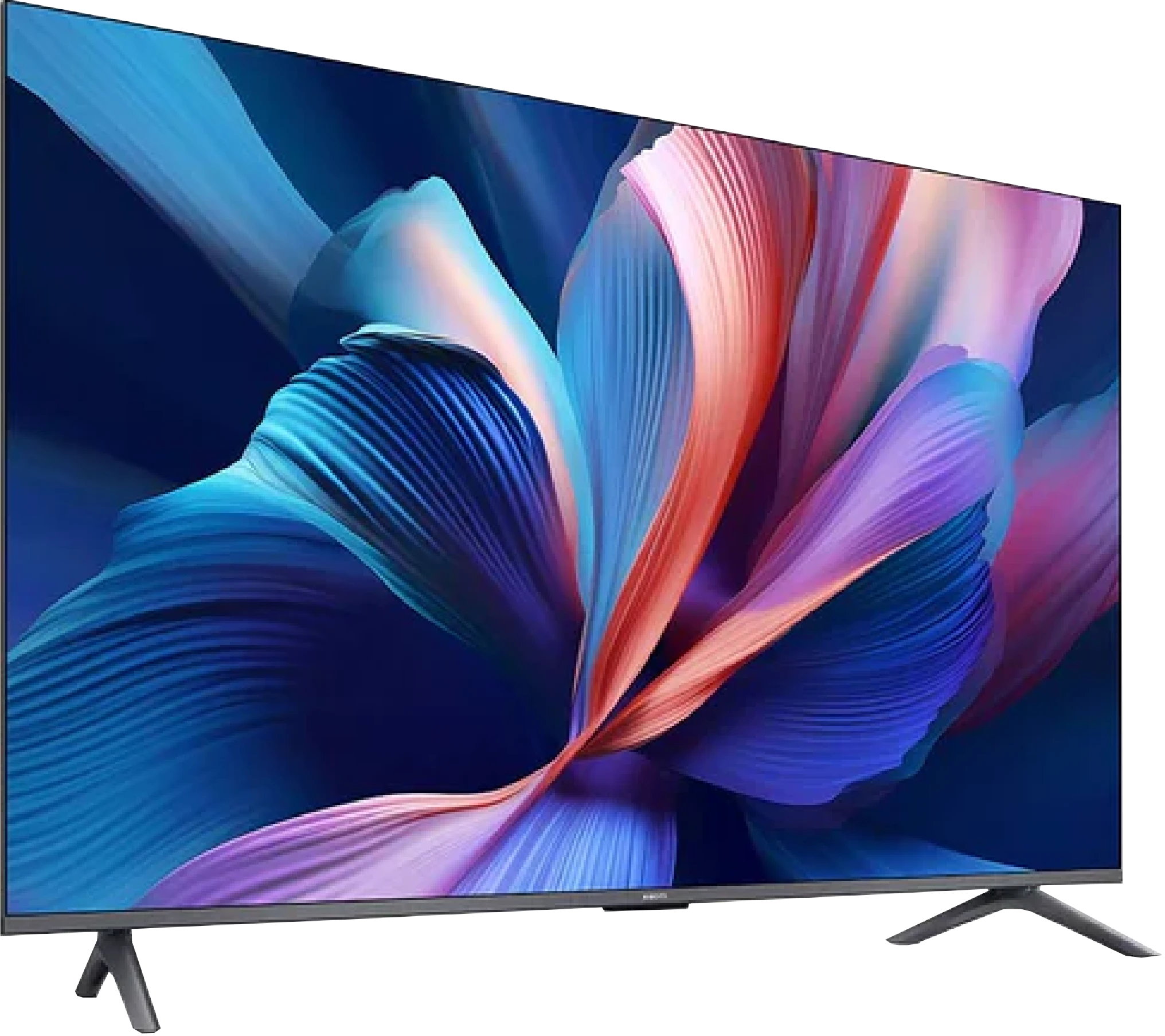
Panel type: LCD VA
Resolution: 3840x2160
System: Tizen
Model year: 2024
Complete the survey to find out the result

Panel type: LCD VA
Resolution: 3840x2160
System: Google TV
Model year: 2025
Complete the survey to find out the result

Overall rating
6.3
5.6
Movies and series in UHD quality
6.3
6.0
Classic TV, YouTube
6.0
5.7
Sports broadcasts (TV and apps)
5.2
4.7
Gaming on console
7.0
6.2
TV as a computer monitor
6.0
2.0
Watching in bright light
6.0
4.9
Utility functions
7.0
6.1
Apps
8.7
9.6
Sound quality
6.2
5.0
Complete the survey to find out what fits your preferences
Advantages
High native contrast
Performs well on sunny days
Easy-to-use Tizen operating system
Low input lag
An interesting choice for casual gamers
VA matrix with good native contrast and decent blacks
Support for Game Boost mode at 120 Hz in 1080p and 1440p
Low input lag in 120 Hz mode
Google TV – a vast selection of apps and services
Wide colour gamut coverage (approx. 94% DCI-P3)
Decent colours after SDR mode calibration
Support for popular audio formats (Dolby Atmos, DTS:X)
Large, clear remote with a numeric keypad – convenient for seniors
Disadvantages
No Dolby Vision
No recording support
Will not play audio in DTS format
Low brightness
No real support for HDR10+ and other more advanced HDR formats (e.g. Dolby Vision)
Significant limitations when working with PC – lack of chroma 4:4:4, strong dithering, poor font readability
Poor viewing angles (typical for VA)
Clunky construction, legs mounted in plastic with screws
Weird system issues – stuttering, errors with Miracast and sound switching
Upscaling and digital image processing are practically non-existent
Very weak sound, virtually no bass (we felt it performed worse than the "2025" model)
Our verdict
Xiaomi A Pro 2026 is a television that at first glance does not reveal significant changes compared to its predecessor. Someone might even think it is simply a copy of last year's model with a different label. And there is some truth to that, as the main new feature, or rather the only noticeable difference, is the 120 Hz mode at lower resolutions. Credit must be given to Xiaomi, as this addition really does make a difference – it is not a solution for professional gamers, but a nod towards those looking for a smoother image during casual gaming. This is where the A Pro 2026 can shine – with a simple yet clever idea that distinguishes it in the “super-budget” segment. Unfortunately, when we begin to look at the television more broadly, excitement quickly dwindles. Even though the year has changed on the calendar, most of the issues known from the A Pro 2025 have remained – the system can still experience strange stutters, and the occasional errors can be quite irritating. Additionally, there is a lack of any serious tools for digital image processing, which worked quite decently last year. As a result, there are many limitations in the design that the competition at a similar price point is already attempting to mask. In terms of picture quality, we will not deceive you either. A brightness level of 200–300 nits does not stand a chance against more demanding materials. Yes, with simpler streaming content, one can manage to watch something, but with high-budget productions, it is immediately evident why the television costs what it does. The impression of watching a flattened image stripped of details accompanies us almost every time. And here we get to the crux of the matter. The Xiaomi A Pro 2026 is a television for those who really require very little. As a daily screen for series, news, or YouTube – it works quite well, especially thanks to its operating system, which is GoogleTV. Also, if someone is looking for budget equipment and additionally would like a taste of smoother gameplay in games due to the 120 Hz mode, they may even be satisfied. But anyone expecting at least average picture quality, a stable system, and proper functionality will quickly notice that there are other budget models on the market that simply perform better.
TV appearance




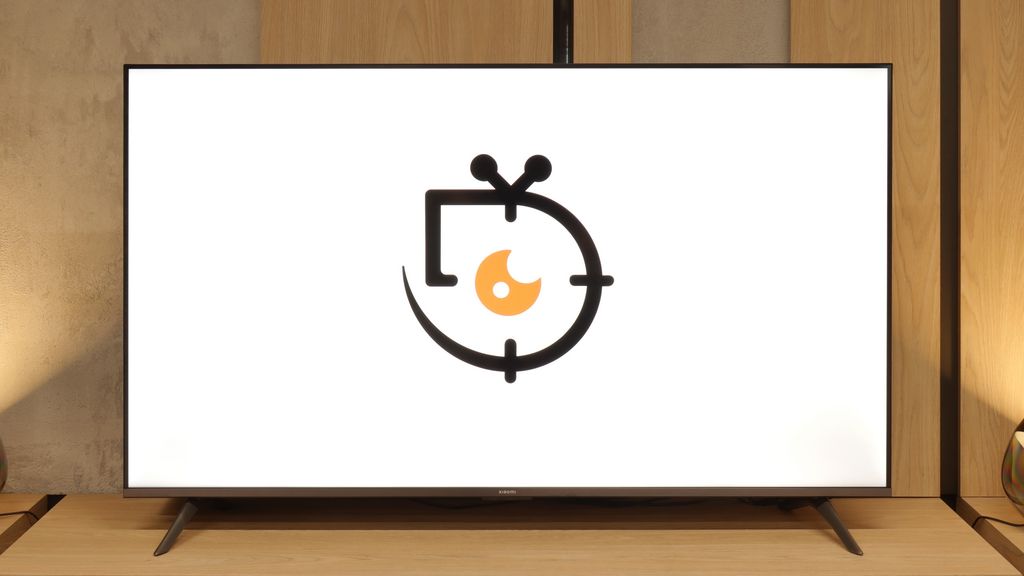
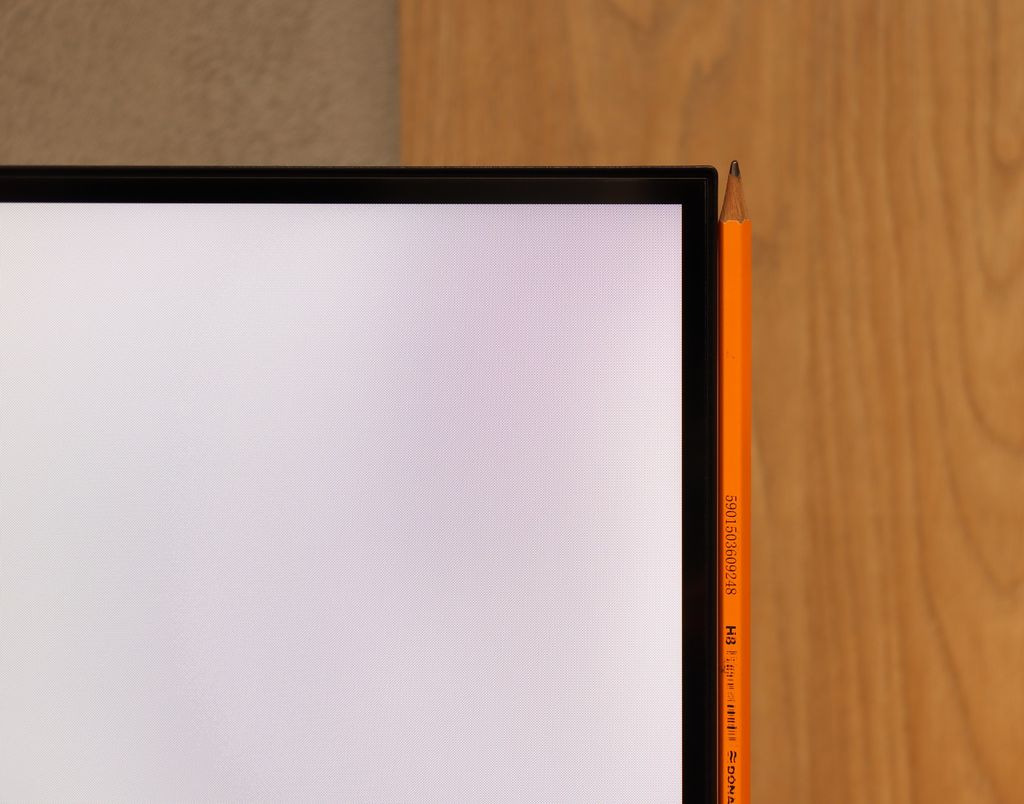
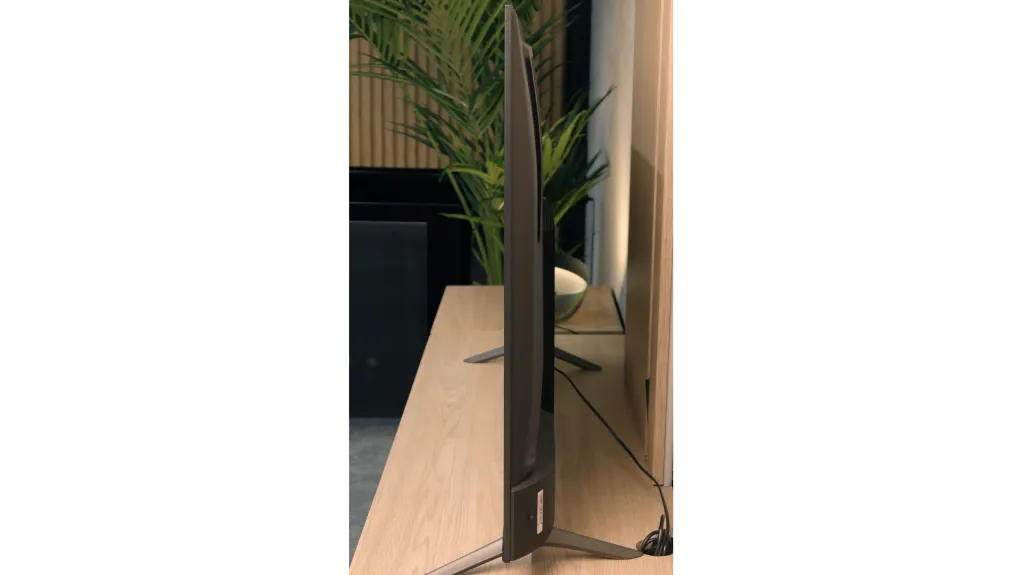
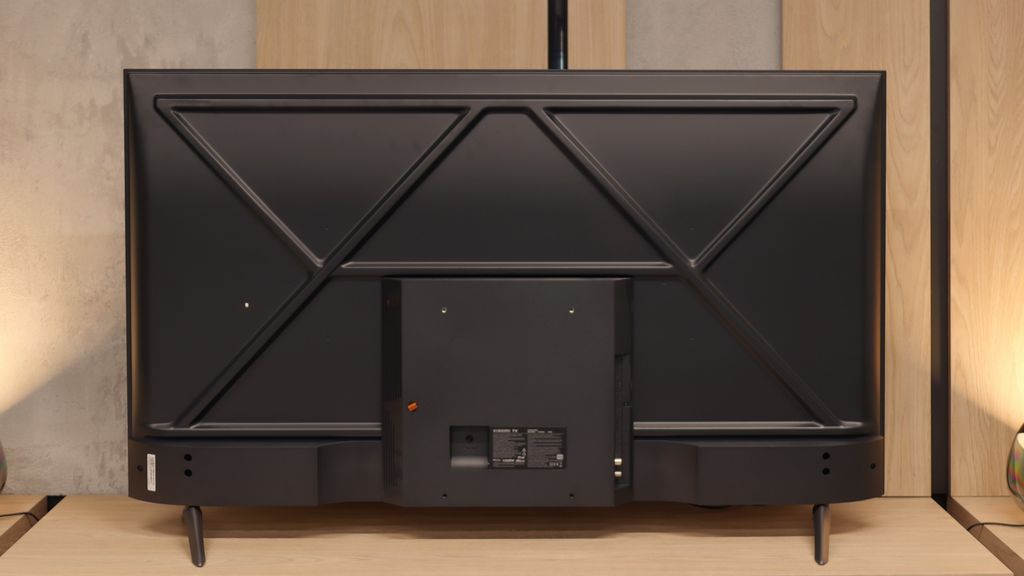
Contrast and black detail
6/10
6.1/10
Local dimming function: No
Local dimming function: No
Contrast:

Result
5,650:1

Result
6,500:1

Result
5,850:1

Result
5,850:1

Result
5,400:1

Result
5,000:1

Result
6,550:1

Result
7,300:1

Result
6,600:1

Result
4,900:1
Halo effect and black detail visibility:


The Samsung Q60D television is equipped with a VA panel, which provides deeper blacks and higher contrast compared to IPS/ADS panels. VA panels are characterised by a better ability to display deep blacks, so if we are looking for an LED display for nighttime viewing, this type of panel should not let us down. In contrast tests, the television showed a result of around 6000:1, which can be considered a decent outcome, ensuring satisfying visual experiences in most scenes. In more challenging scenes, such as that from the film Oblivion, the television performs well with light separation, adding detail and depth. However, in scenes with a more demanding light composition, like that from the film Sicario 2, the limitations resulting from the lack of local dimming technology are noticeable. The black elements of the image tend to resemble navy blue. Despite this phenomenon, the Q60D offers really decent contrast.
One of the biggest advantages of even a budget model like the Xiaomi A Pro 2026 is the use of a VA panel. It is responsible for quite a decent contrast, which in our measurements oscillated around 5000:1 – 7000:1. On the screen, this translates to a stable image with a fairly deep black – something that is difficult to find in competitive models with an IPS panel without local dimming. Xiaomi has also added a feature for global dimming of the entire panel. It sounds good, but… we advise you to turn it off immediately. Why? Because the screen begins to behave very strangely in darker scenes – sometimes it dims so much that practically nothing is visible, while at other times it brightens so much that the already dark blue black turns into a bright blue. At that moment, we felt as if the television was simply damaged. Fortunately, without this feature, the contrast looks really solid. It is definitely not on the level of advanced televisions with local dimming, but in its price range, it will comfortably satisfy most users – especially if you are not watching in a completely dark room, but have at least a little light in the background, which effectively masks the imperfections of the "blue black".
HDR effect quality
5.7/10
4.1/10
Luminance measurements in HDR:

Result
527 nit

Result
530 nit

Result
524 nit

Result
531 nit

Result
537 nit

Result
220 nit

Result
248 nit

Result
322 nit

Result
315 nit

Result
326 nit
Scene from the movie “Pan” (about 2800 nits)


Scene from the movie “Billy Lynn” (about 1100 nits)


Static HDR10


Dynamic: HDR10+
Dynamic: HDR10+


HDR luminance chart:
XIAOMI A PRO 2026
HDR luminance
Samsung Q60D / Q67D / Q68D
HDR luminance
The Samsung Q60D television, regardless of the scene being tested, achieves brightness above 500 nits, which is above average for this class of devices. Such a level of brightness allows one to experience a taste of true home cinema, with clearly visible details in bright parts of the image and well-reproduced contrast dynamics, especially when watching content from streaming platforms or movies played from Blu-ray. As a result, film screenings gain greater depth and realism, particularly in well-lit scenes. Despite the use of quantum dot technology (QLED), the television does not achieve outstanding results in colour reproduction. The coverage of the DCI-P3 colour space is only 90%, which may be noticeable in more demanding scenes, where the richness and saturation of colours play a key role in image quality.
If you are hoping for a cinema-grade HDR effect in the new Xiaomi A Pro 2026, you better cool your expectations quickly. This television is simply too dim to fully showcase the capabilities of contemporary films or series designed for the highest image quality. Our measurements showed brightness in the range of 200–300 nits, which is more akin to SDR content than ambitious HDR productions. In practice, this means that while most films may look fine, they certainly won't evoke that "wow" effect that other televisions are known for. Fortunately, not everything is lost – we must credit the PFS LED filter used here, which is a solution similar to the quantum dot technology found in QLEDs. Thanks to this, the coverage of the DCI-P3 colour palette reaches about 94%, resulting in vibrant, saturated colours in the vast majority of materials.
Factory color reproduction
6.5/10
3.5/10


Factory Mode
After calibration


Factory Mode
After calibration
Samsung has been offering a "Filmmaker" mode in its televisions for several years, aimed at providing the most faithful picture settings straight from the factory, in accordance with the vision of filmmakers. This is certainly a significant step towards cinematic quality at home; however, it is worth noting that this mode is not without its problems.
For instance, the white balance in both SDR and HDR modes exhibits an excessive amount of red hue, causing the picture to appear too warm. As a result, the skin of actors and bright scenes may seem unnaturally pinkish. The Colour Checker test further confirms this issue – colour samples often shift towards red tones, deviating from the neutral colour reproduction that would be more desirable in a professional setting.
When it comes to contrast, there is a noticeable drop at the beginning of the gamma graph, where values below 2.4 drop all the way down to 2.1. Consequently, the image in darker scenes may appear less distinct, losing depth. In terms of HDR content, the EOTF curve (responsible for brightness reproduction) shows a strong spike at the beginning of the graph, which may lead to excessive brightness in the lighter parts of the image, disrupting the natural tonal balance.
What we saw in Filmmaker mode took us by surprise – and unfortunately not in a good way. The mode advertised as Hollywood standard resembled more of a shop window display. The white balance was shifted towards blue, leading to significant colour mistakes and burnt-out scenes in SDR content. It was slightly better, though still not perfect, in HDR materials. There were also issues there – the colour saturation and the entire palette consistently drifted towards cooler tones, resulting in an image that had more of an artificial, cold tint instead of a cinematic character. In other words: even in Filmmaker mode, which should showcase this television, we got an effect far from expectations.
Color reproduction after calibration
8/10
7/10




After professional calibration of the Samsung Q60D television in film mode, users can enjoy a significant improvement in image quality. Samsung televisions have always offered 2- and 20-point grey scale adjustments, as well as an advanced CMS (Color Management System), which allows for precise colour and shade adjustments. The white balance for both SDR and HDR has been free from strong spikes and tendencies for colours to shift to red hues, greatly enhancing the naturalness of the image. Although a few more significant errors can still be observed in HDR mode, the overall colour reproduction quality has been excellently improved. Regarding contrast, although drastic changes cannot be mentioned due to limitations in the television's technology, the improvement is noticeable. Thanks to calibration, details in dark scenes are more visible, and the differences between light and dark elements of the image have been enhanced. This makes the overall viewing experience more satisfying, allowing viewers to enjoy greater depth and realism in the displayed content.
Although Xiaomi is not a brand associated with top-tier televisions, it must be acknowledged that even in a budget model like the A Pro 2026, the manufacturer left plenty of calibration settings. After a few adjustments, the SDR image gained a completely new look. Colours stopped drifting towards blue tones, whites took on a more natural quality, and most errors dropped to a practically invisible level. As a result, SDR content looked very good, surprisingly so for this price range.
It was somewhat different with HDR materials. Here, it was immediately evident what we had already mentioned – clipping in bright scenes and issues with balance control. Calibration helped only partly, as the limitations of the panel itself played a role. However, it must be emphasized that for SDR, the television had transformed beyond recognition and in a decidedly positive direction.
Smoothness of tonal transitions
7/10
9.3/10












Samsung Q60D offers decent performance, making it an attractive choice for film and gaming enthusiasts. The gradation of bright colours is undoubtedly a strong point of this model, ensuring that brighter scenes look exceptionally natural and smooth. Although the transitions in darker shades may reveal the colours a bit more, the overall effect remains satisfactory. The television handles tonal transitions well, providing viewers with visual experiences that enhance movie nights and gaming sessions. Thanks to these qualities, the Samsung Q60D will not spoil our film screenings.
The television really handles colour blending well, and in most scenes, it's difficult to spot any imperfections. This is most evident in the bright segments of films, where tonal transitions look almost perfect; the image is then smooth and natural. Darker scenes present slightly worse, where characteristic banding can be noticed. Fortunately, this is not a flaw that stands out prominently, and for most viewers, it will remain practically unnoticed.
Image scaling and smoothness of tonal transitions
5.4/10
3/10
Smooth transition function


Image without overscan on the SD signal


However, when it comes to processing and scaling lower quality materials, the television performs quite well. The image is rendered without overscan, which ensures full use of the available screen area. Additionally, the outlines of the model or the branches of the tree are not overly jagged, which translates to a satisfactory quality of the displayed content. Although noise reduction could be more effective, the overall results of processing lower quality materials are positive and meet expectations.
Upscaling and digital image processing in the Xiaomi A Pro 2026 are not among the strengths of this model. One might expect that since the television was not designed to achieve record brightness levels, the manufacturer would focus on a more robust processor and a set of features that would "enhance" lower-quality images. Unfortunately – and here we are also faced with significant disappointment. On the positive side, we can note reasonably good upscaling, which handles HD materials and boosts them up to 4K in an acceptable manner. However, this is where the list of advantages ends. The television does not offer any features that improve tonal transitions or smooth out digital imperfections, so in most cases, we get a raw image, exactly as we deliver from an external source. On a large screen, such a lack of support makes lower-quality materials simply look bland. An additional problem is the phenomenon of overscan. When watching older materials, it happens that part of the image gets cut off, which only amplifies the impression that Xiaomi still has a lot of ground to make up in this category.
Blur and motion smoothness
4.5/10
4.5/10

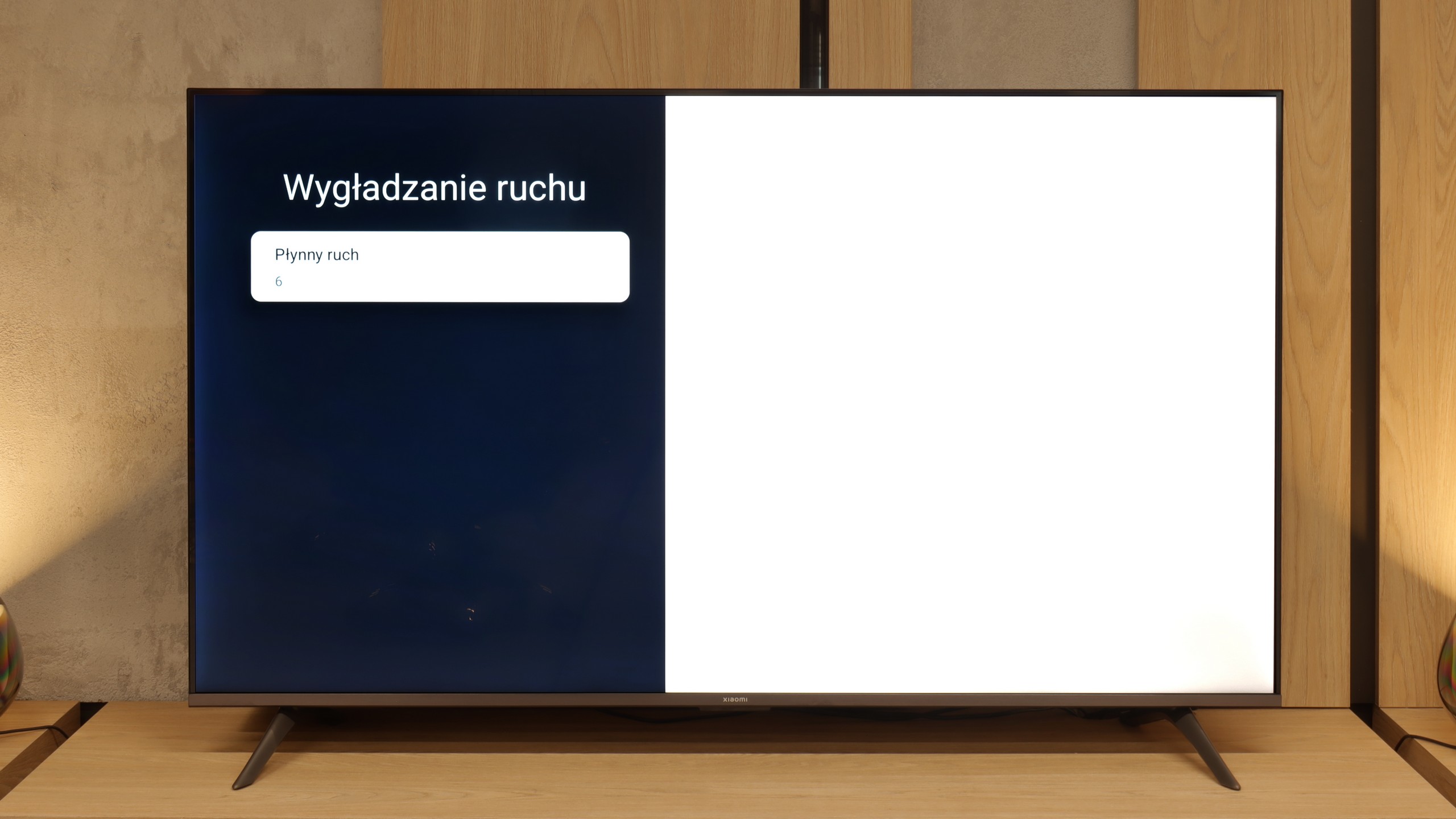
Blur (native resolution, maximum refresh rate):






Blur (BFI function enabled):
Image flickers in this mode






Smużenie ():
Smużenie (1440p@120Hz):



Samsung Q60D is equipped with a 60 Hz panel and a film smoothness enhancement option known as "Motion Blur Reduction." This feature aims to minimise motion blur and enhance overall image smoothness, which will certainly appeal to users who are primarily looking for a television to watch films and series. Thanks to this technology, viewers can enjoy a more fluid visual experience, even in dynamic action scenes where details are crucial. However, it is worth noting that while "Motion Blur Reduction" improves the smoothness of images in films, for gaming, this panel may not be the best choice as it exhibits significant motion blur, which can be seen in the picture below.
The fluidity of motion in the Xiaomi A Pro 2026 is an interesting compromise that arises from the hybrid matrix used here. At its native 4K resolution, the maximum refresh rate is 60 Hz – sufficient for those who mainly watch films and series. It is precisely with them in mind that the manufacturer has added a motion smoother, allowing users to adjust the image to their own preferences – opting for greater fluidity or leaving more "cinematic" frames depending on the settings.
Console compatibility and gaming features
4.8/10
3.6/10
- ALLM
- VRR
- VRR range
- Dolby Vision Game Mode
- Correct implementation of HGIG
- 1080p@120Hz
- 1440p@120Hz
- 4K@120Hz
- Game bar

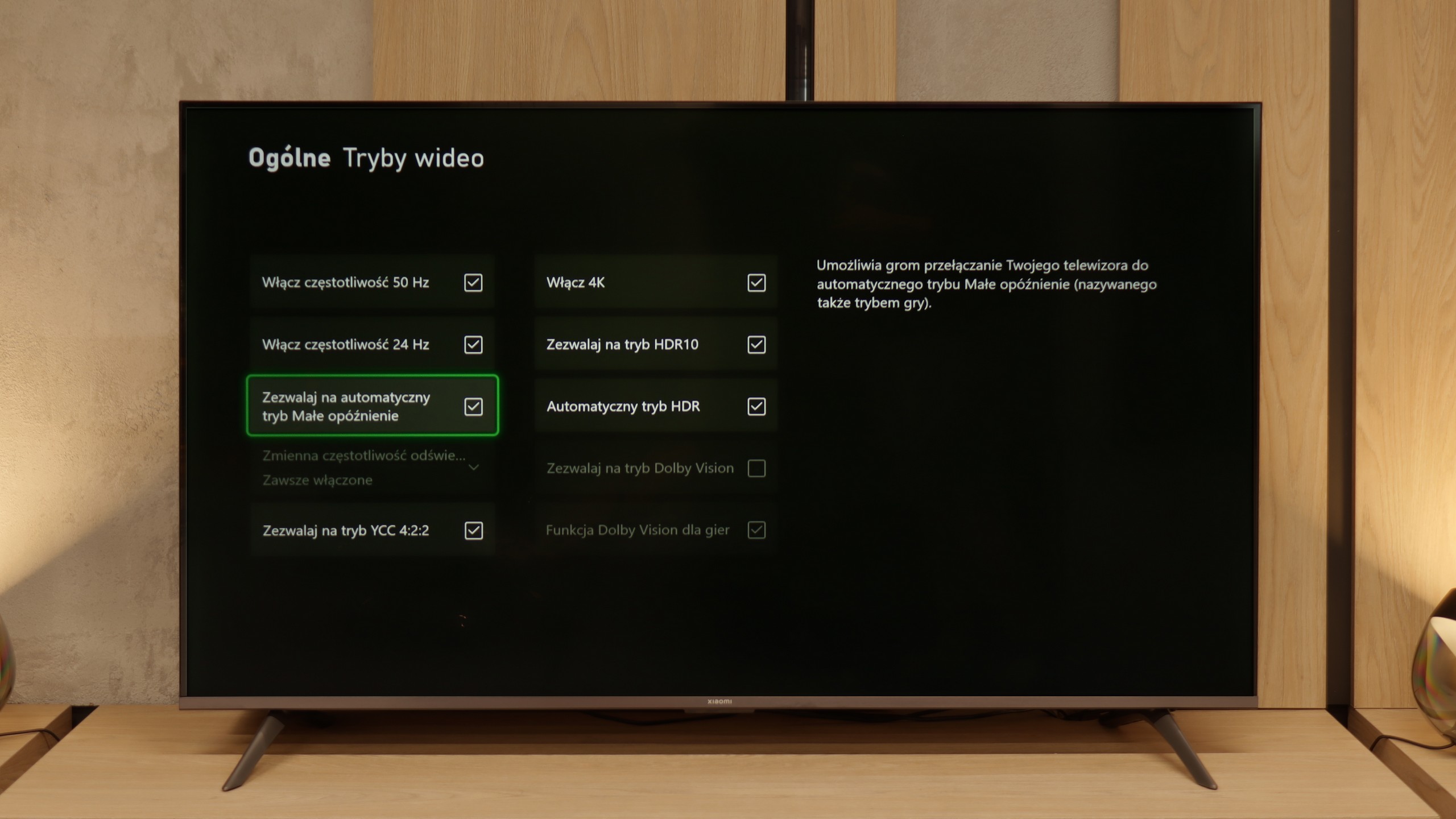

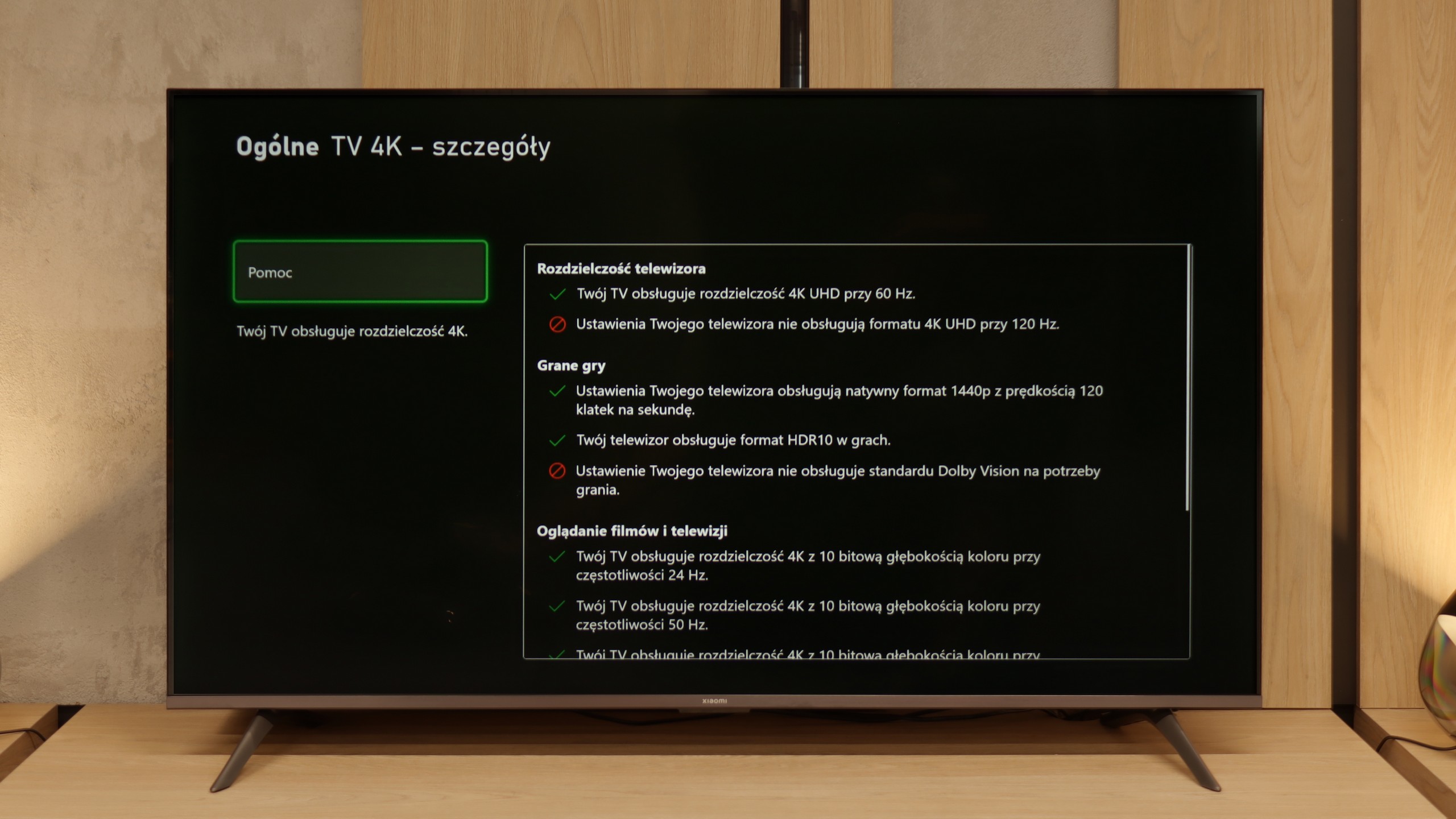

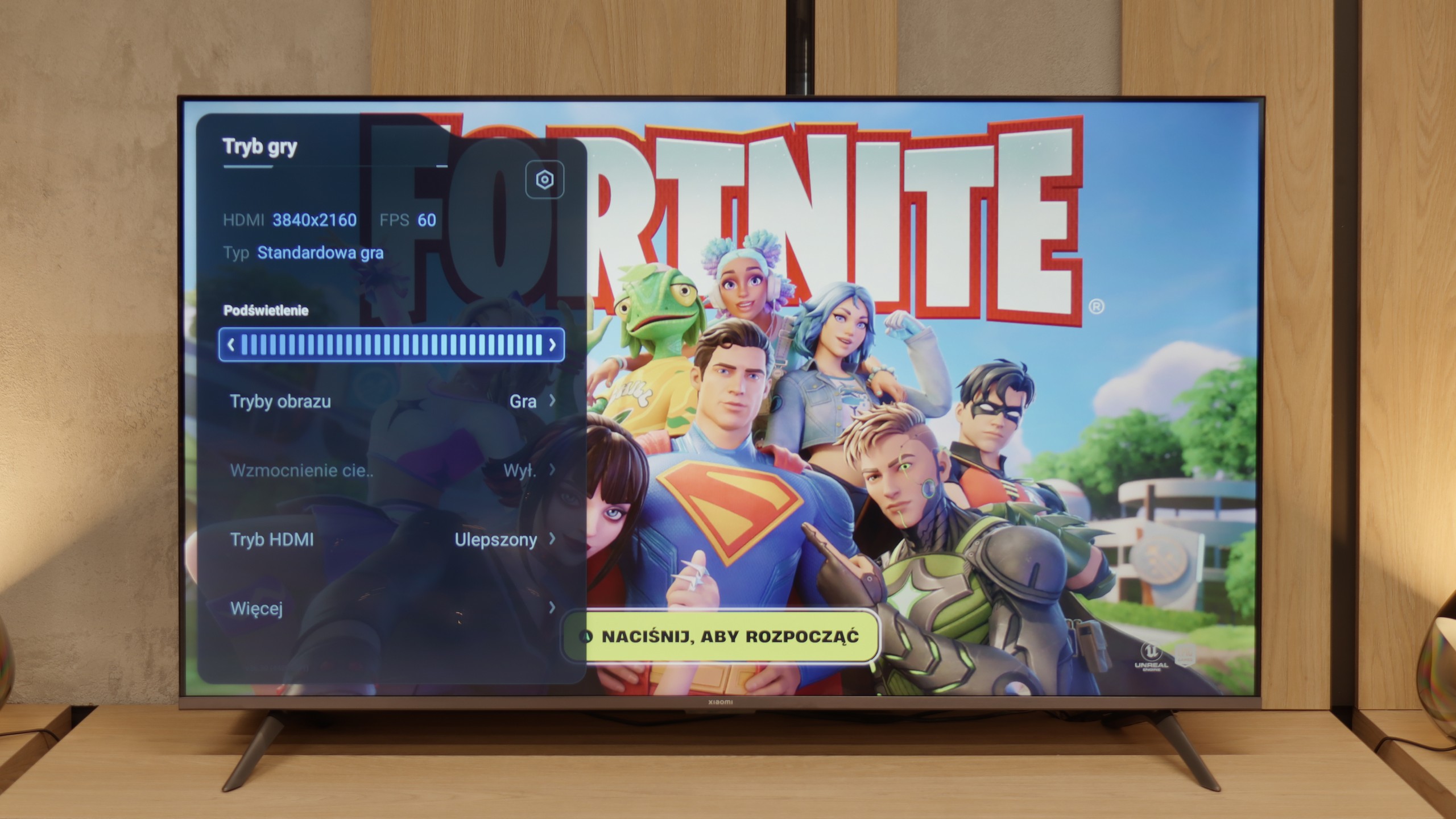

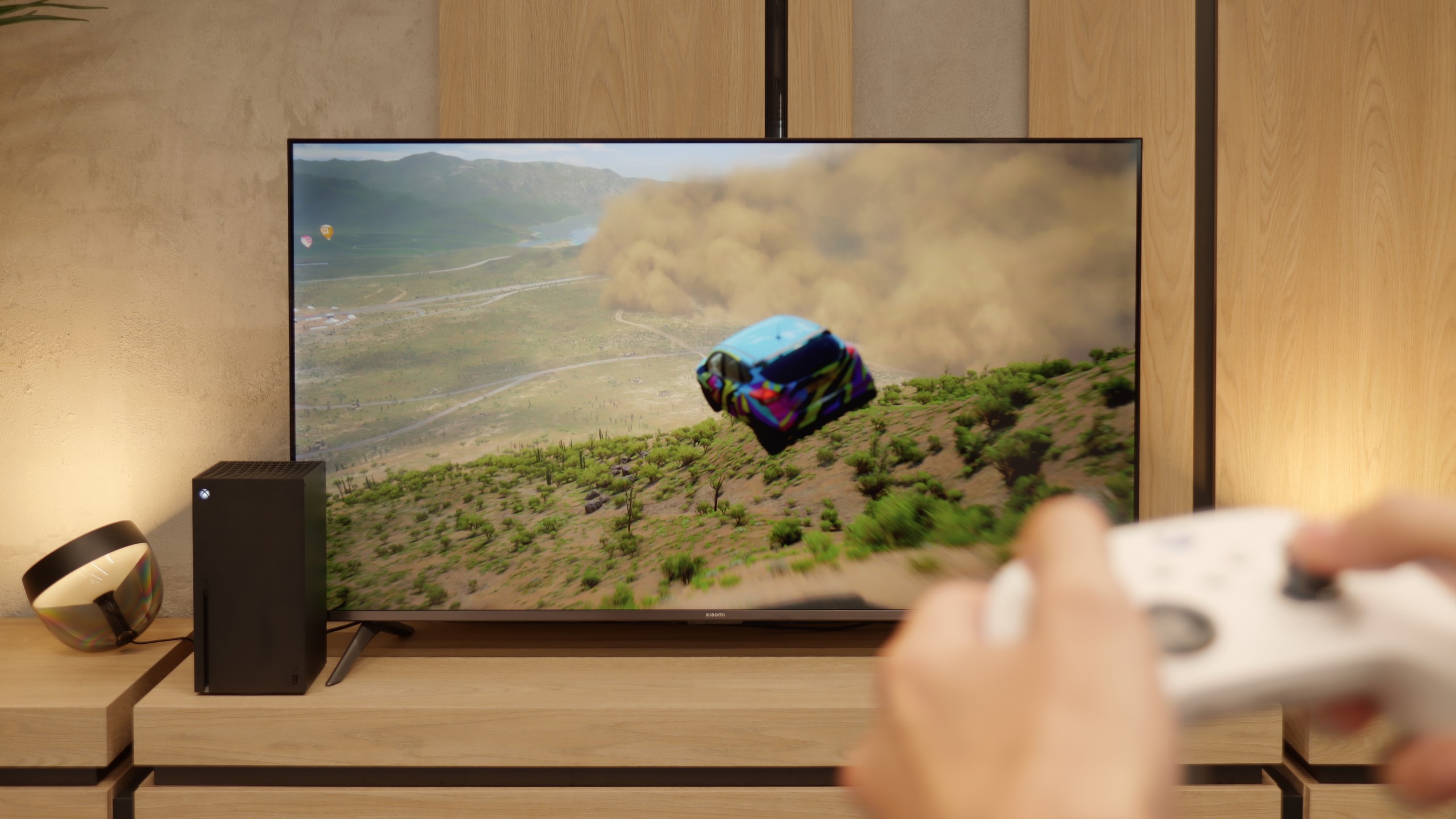
Samsung Q60D is equipped with features such as ALLM (Auto Low Latency Mode), HGiG (HDR Gaming Interest Group) and Game Bar, which significantly enhance the gaming experience. However, the lack of HDMI 2.1 implementation limits capabilities, preventing the use of VRR (Variable Refresh Rate), which could further improve smoothness and picture quality. Overall, for casual gamers, this television should perform well in everyday use, providing satisfactory gaming experiences. However, if we are more demanding in terms of gaming, it is worth considering models with a higher refresh rate and HDMI 2.1, which will ensure full functionality and better support for the latest games. In such cases, investing in a more advanced television will yield significantly better results in terms of smoothness and picture quality, which is crucial for gaming enthusiasts.
Exactly – since Xiaomi has included the "Game Boost 120 Hz" feature, one might expect that they would follow up with a solid gaming package. Unfortunately, reality quickly dampens this enthusiasm. Aside from this mode (which, it must be admitted, is a great addition in a budget design), we only have a rather odd player panel. It's hard to call it a full-fledged "game bar" – it’s more of a simple overlay on the TV Menu with limited capabilities. And that would be about it. There’s a lack of ALLM, so the TV won’t automatically switch to game mode. There’s no VRR, so you can forget about smooth frame sync. We also won’t find support for Dolby Vision in games or the HGiG format, which are becoming increasingly standard on consoles. In short: besides the Game Boost 120 Hz, which actually allows for a more enjoyable experience at 1080p or 1440p, the Xiaomi A Pro 2026 offers nothing that could particularly attract gamers.
Input lag
9.9/10
9.5/10
SDR
HDR
Dolby Vision
When it comes to input lag, the Samsung Q60D television does not disappoint in this aspect. With results of around 15 ms, the television offers truly impressive responsiveness. Such a low input lag means that reactions to commands from the controller are instantaneous, which translates to better gaming experience, especially in dynamic titles that require precise movements.
The input lag on the Xiaomi A Pro 2026 is quite decent and definitely not its weak point. The best results were achieved in 1080p@120 Hz and 1440p@120 Hz modes – in those, the television goes below 10 ms, which can easily be described as an outstanding result, and more than sufficient even for the more demanding gamers. The situation changes with 60 Hz content – the input lag then rises to around 25 ms. While these may not be the best figures on the market, they are perfectly acceptable for casual gaming or firing up a console in the evening. Especially since in most cases, it's still worthwhile to enable the 120 Hz mode, which is the most advantageous for gamers.
Compatibility with PC
6/10
2/10

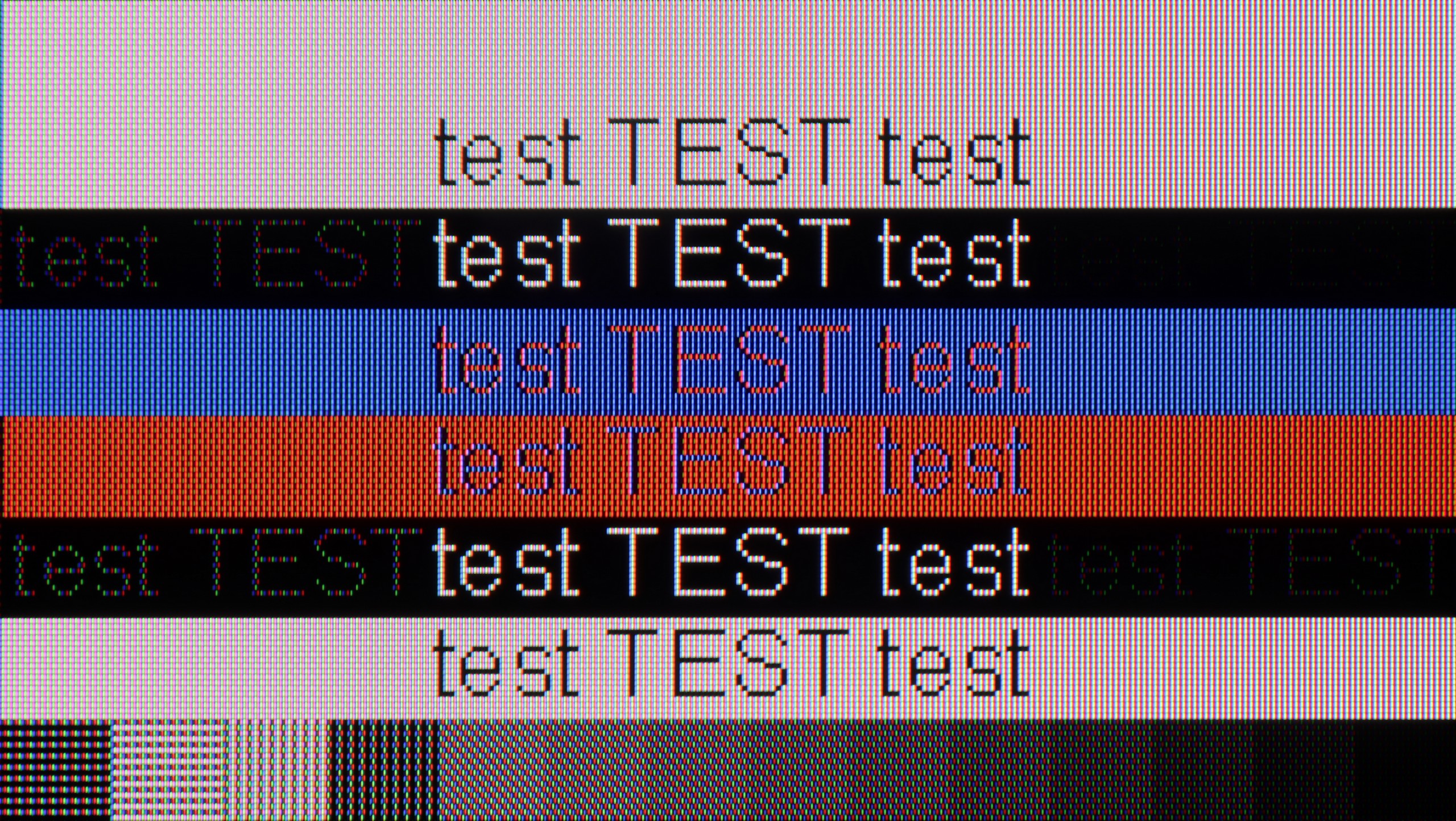
When it comes to working on a PC, the Samsung Q60D television offers very good font readability, regardless of the background on which they appear. Thanks to support for the 4:4:4 chroma format, text is clear and sharp, which is important when using office applications or browsing the internet. Additionally, the low input lag of 15 ms ensures that responses are immediate, significantly enhancing the user experience during work or gaming on the computer. However, the television has a 60Hz panel and does not support G-Sync, which could satisfy PC gamers.
Xiaomi A Pro 2026 as a computer monitor? There's no point beating around the bush – it's very bad. While the 120 Hz mode can still be used in games at lower resolutions, for daily work the television is completely unsuitable. There's a lack of full support for chroma 4:4:4, meaning fonts are blurred and sometimes even rainbow-like. Additionally, there's significant dithering, causing the image to appear uneven – some pixels shine brighter, others dimmer, and vertical lines can even break apart. In practice, this means that text (especially coloured and on a dark background) becomes hard to read. Light text manages to hold up somewhat, but it’s hard to talk about any comfort here. In this category, we give the Xiaomi A Pro 2026 a score of 2/10 (+1 for the additional high refresh rate mode), and there’s really no point in dwelling on this further.
Viewing angles
3/10
3/10
Samsung Q60D is equipped with a VA panel. The viewing angles are not its strongest point; when watching the image from the side, we can notice colour distortions and a drop in brightness. However, VA panels stand out for their good black reproduction, which translates into deeper and more intense movie scenes.
Xiaomi A Pro 2026 uses a VA panel, which immediately suggests that viewing angles are not its strong suit. When looking at the screen from the side, we quickly notice a loss of quality – colours noticeably fade, and the whole image appears washed out. The drop in brightness may not be as drastic as in some constructions based on similar technology, but that does not change the fact that this is clearly a weak point of this model. If we plan to use it as a large, cheap screen for the living room, we need to reckon with this limitation.
TV efficiency during daytime
6/10
4.9/10

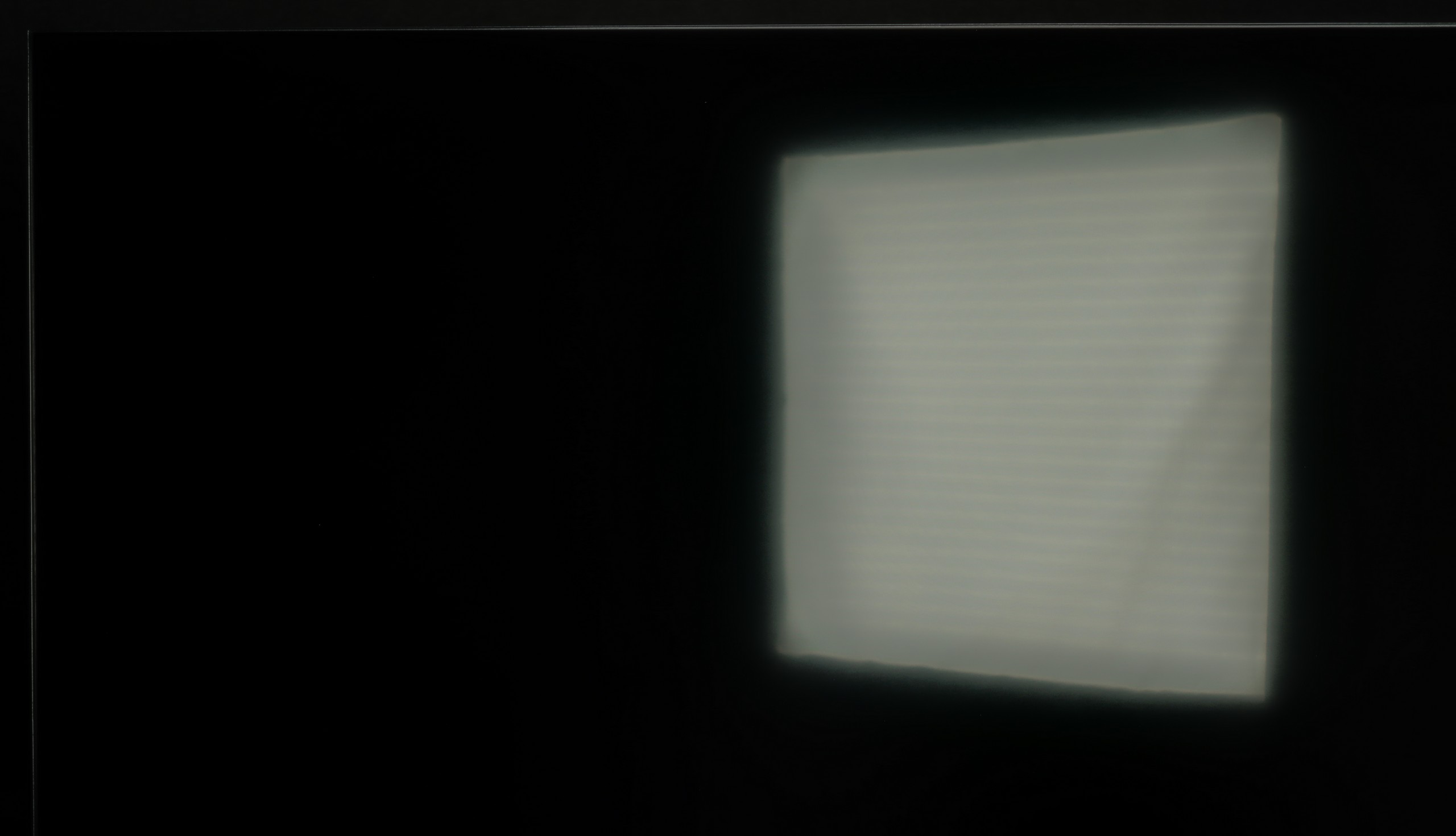


Matrix brightness
Average luminance SDR
XIAOMI A PRO 2026: 334 cd/m2
Samsung Q60D / Q67D / Q68D: 542 cd/m2
Samsung Q60D is equipped with a satin matrix, which averages well at suppressing reflections. Although the matrix does not eliminate them completely, its high brightness of 550 nits ensures that the image remains readable even in bright lighting conditions. This makes watching television during the day still comfortable, and the details are clearly visible, which makes this model a suitable choice for those using the television in daylight.
Xiaomi A Pro 2026 performs quite well during the day. The display has a satin coating that manages to dull reflections somewhat, so the colours do not lose their vibrancy, even when the room is bright. Just remember that it is not an extremely bright screen – the average brightness is around 350 nits. In a typical, moderately sunlit living room, it is sufficient, but if you have large windows and plenty of sunshine coming in, it might simply be difficult without blinds or curtains.
Details about the matrix
Subpixel Structure:

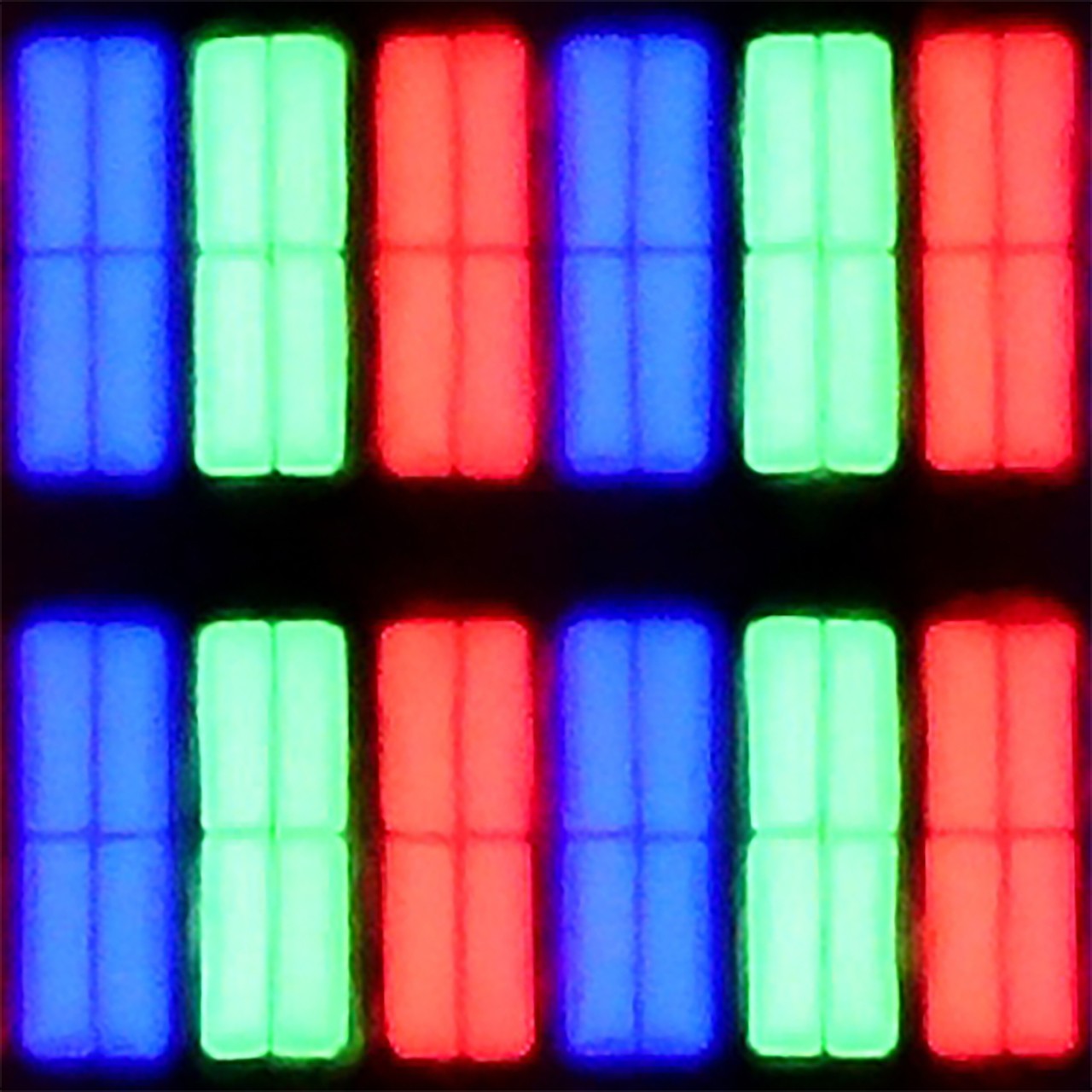
Panel uniformity and thermal imaging:


Samsung Q60D / Q67D / Q68D
XIAOMI A PRO 2026
TV features
7/10
6.1/10
- HDMI inputs3 x HDMI 2.0, 0 x HDMI 2.13 x HDMI 2.0, 0 x HDMI 2.1
- Other inputsRCA (Chinch)
- OutputsToslink (Optical audio), eARC (HDMI), ARC (HDMI)Toslink (Optical audio), eARC (HDMI), ARC (HDMI), Mini-Jack (Headphones)
- Network InterfacesWi-Fi 2.4GHz, Wi-Fi 5GHz, Ethernet (LAN) 100MbpsWi-Fi 2.4GHz, Wi-Fi 5GHz, Ethernet (LAN) 100Mbps
- TV receptionDVB-T, DVB-T2, DVB-S, DVB-S2, DVB-CDVB-T, DVB-T2, DVB-S, DVB-S2, DVB-C
Classic features:
- Recording to USB (terrestrial TV)
- Recording programming
- Picture in Picture (PiP)
- RF remote control (no need to aim at the screen)
- Backlit remote control
- Teletext
- Audio only mode
- Bluetooth headphones support
- Simultaneous Bluetooth headphones & TV audio
Smart features:
- AirPlay
- Screen mirroring (Windows Miracast)
- Voice search
- Voice search in native language
- Ability to connect a keyboard and mouse


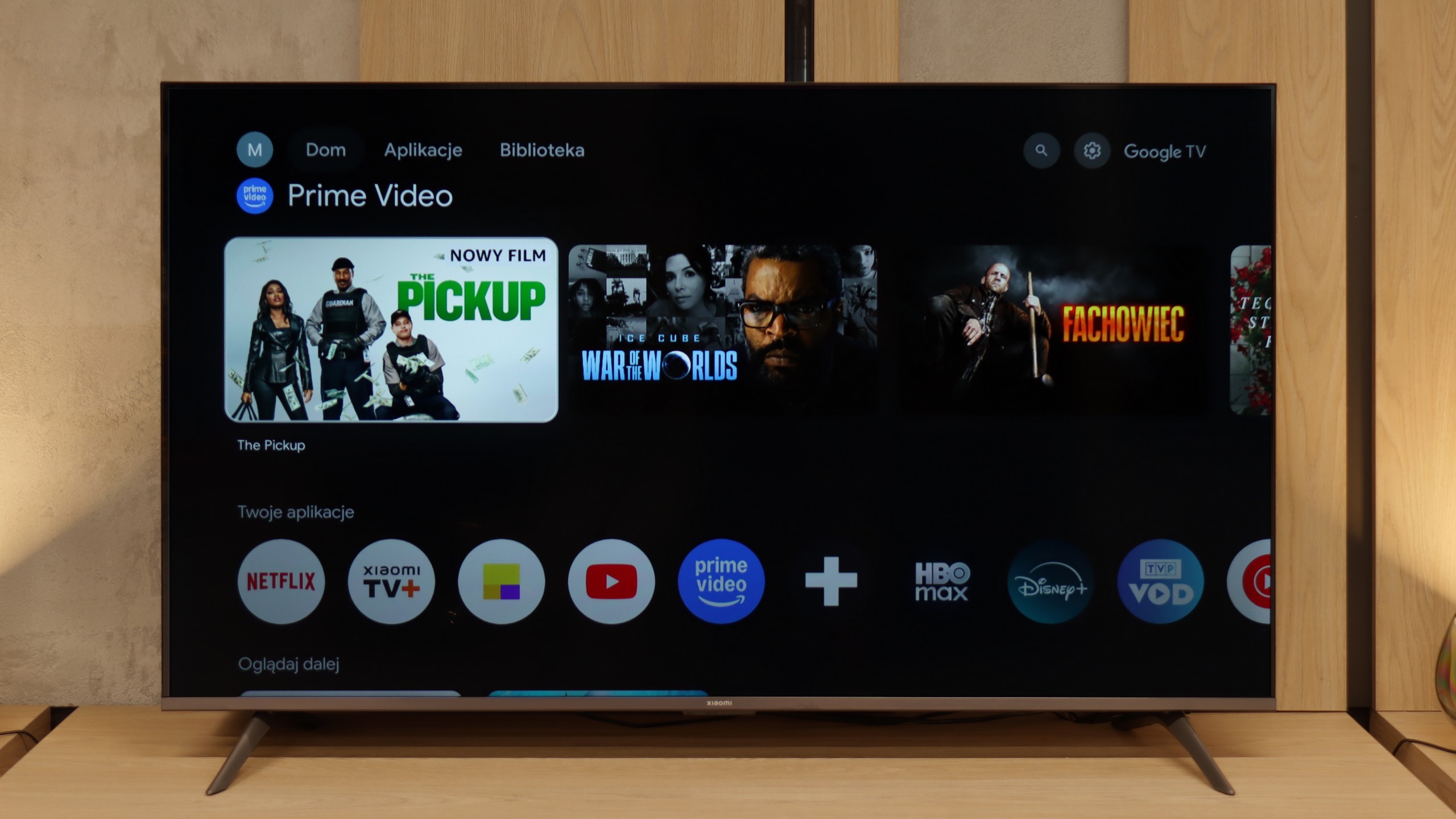
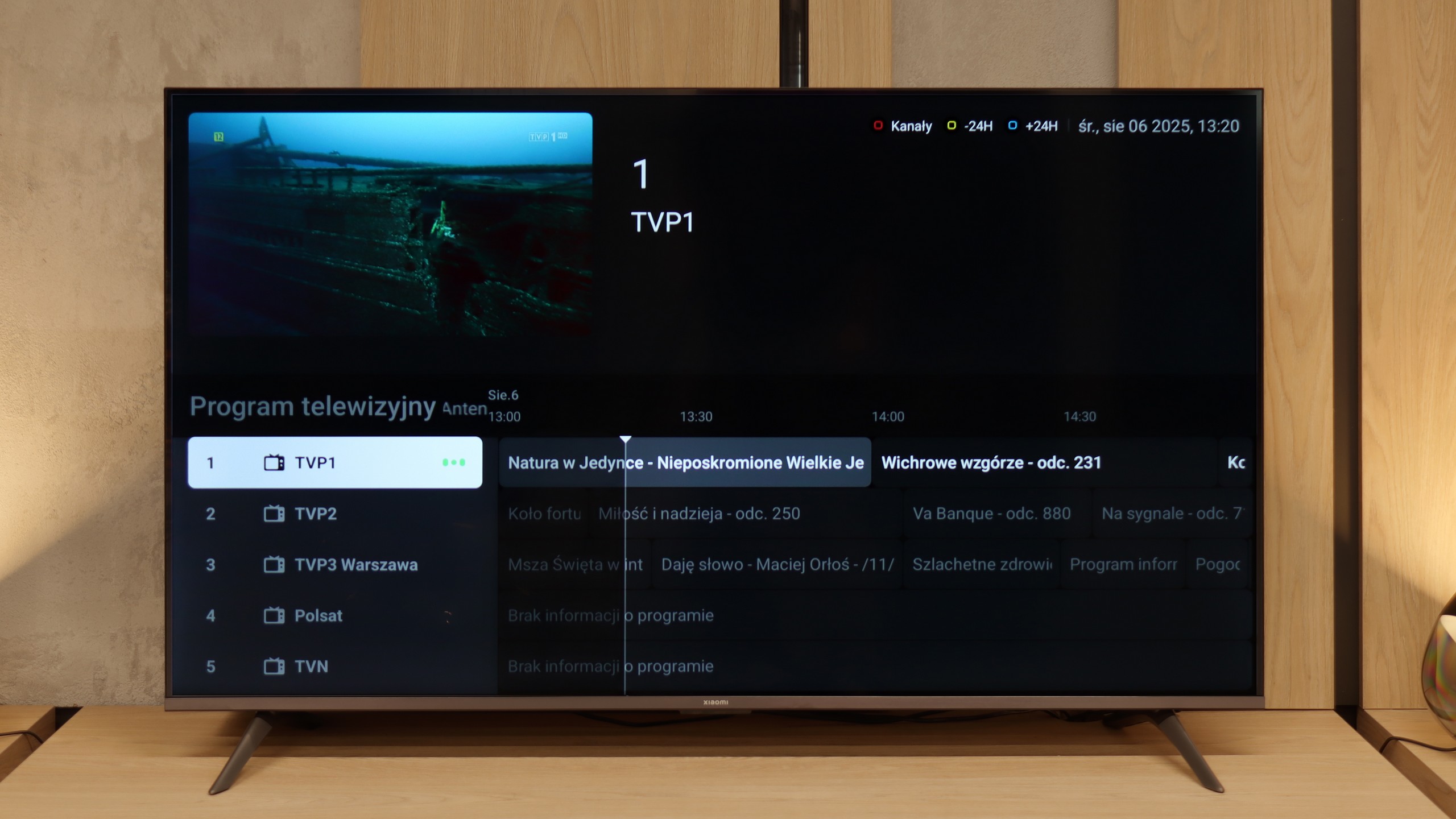
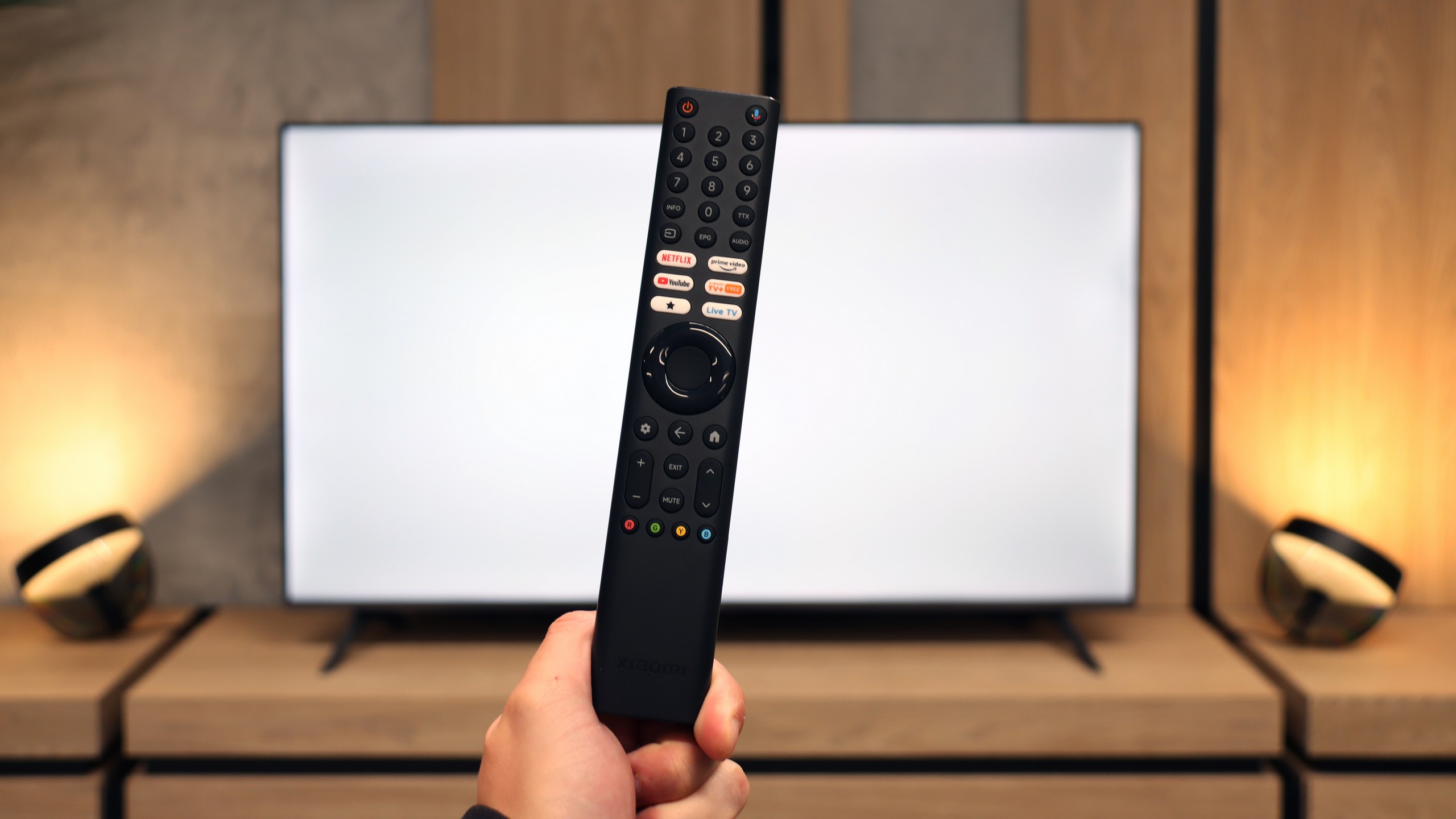
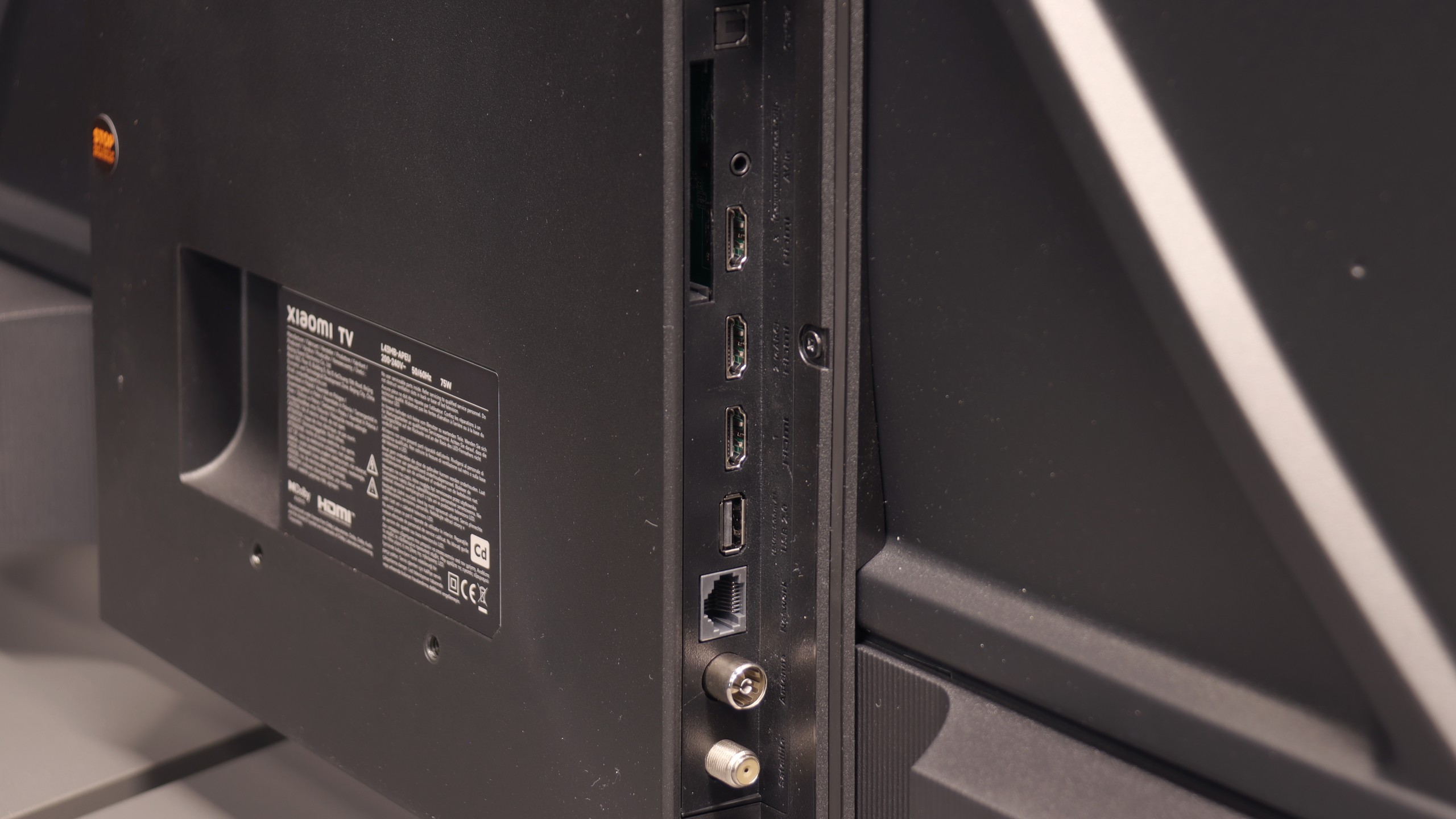
Samsung Q60D operates on the proprietary Tizen system, which, although not as open as Google's system and having certain limitations regarding available applications, should satisfy most users. The interface is clear and intuitive, allowing easy access to popular streaming platforms such as Netflix, YouTube, and Prime Video. Users will also appreciate the ability to customise the home screen, enabling quick jumps to favourite applications and content. However, the lack of a recording feature may be a concern for those who wish to archive their favourite programmes or films for later. On the other hand, a pleasant surprise is the presence of AirPlay functionality, which allows for seamless content streaming from Apple devices, such as iPhone or iPad. This enables users to easily share photos, videos, and other materials without the need for cables.
Additionally, the television allows for the connection of various peripheral devices via Bluetooth, significantly enhancing its functionality. Users can make use of wireless headphones, soundbars, and other accessories, which translates into greater comfort of use. The remote control included with the television is slim, elegant, and ergonomic. It is equipped with an internal battery that can be charged via a USB-C port or solar energy, which is a convenient solution that eliminates the need for battery replacement. Furthermore, it allows control of other devices such as the external decoder NC+ / Canal +.
Moreover, the SmartThings app for smartphones and iPhone enables the integration of the television with other smart devices in the home. This allows users to remotely control various elements of their home, such as Philips Hue smart lighting, Yeelight, and other products compatible with this system. The Samsung Q60D becomes the focal point in a smart home, making it easy to manage daily tasks and entertainment.
SmartTV - Google TV
The biggest advantage of the Xiaomi A Pro 2026 is the Google TV system. It is what gives the television a second life – you can run practically any application on it, from Netflix and YouTube to music services and lesser-known programmes from the Google Play Store. We are not limited to what the manufacturer has pre-installed, as is the case with other budget televisions. Additionally, we have AirPlay, voice search via Google Assistant, and even integration with Gemini. We did encounter a few minor hiccups – for example, streaming from a laptop did not always want to work – but despite these shortcomings, Google TV is a huge plus in this setup.
Classic TV Functions
The Xiaomi A Pro 2026 can be termed a 'senior-friendly' television. The large remote control with a numerical keypad and a considerable number of physical buttons makes it intuitive to operate. Support for teletext and a clear EPG interface facilitate the use of classic television functions. We will not find many advanced features such as USB recording or the PiP function, but the presence of an analogue headphone jack output can be surprisingly practical for some users. It gives the impression of a set of features tailored to the needs of the most traditional viewers.
System Stability
However, not everything works as it should. During testing, we encountered irritating system lags, problems with Miracast, and issues when switching audio sources. There were even instances where it was necessary to reset the television by disconnecting it from the power supply. This simply shows that although Google TV offers huge possibilities, the stability in such a budget-friendly construct can still be quite problematic.
Playing files from USB
9.3/10
6.8/10
Supported photo formats:
Maximum photo resolution:

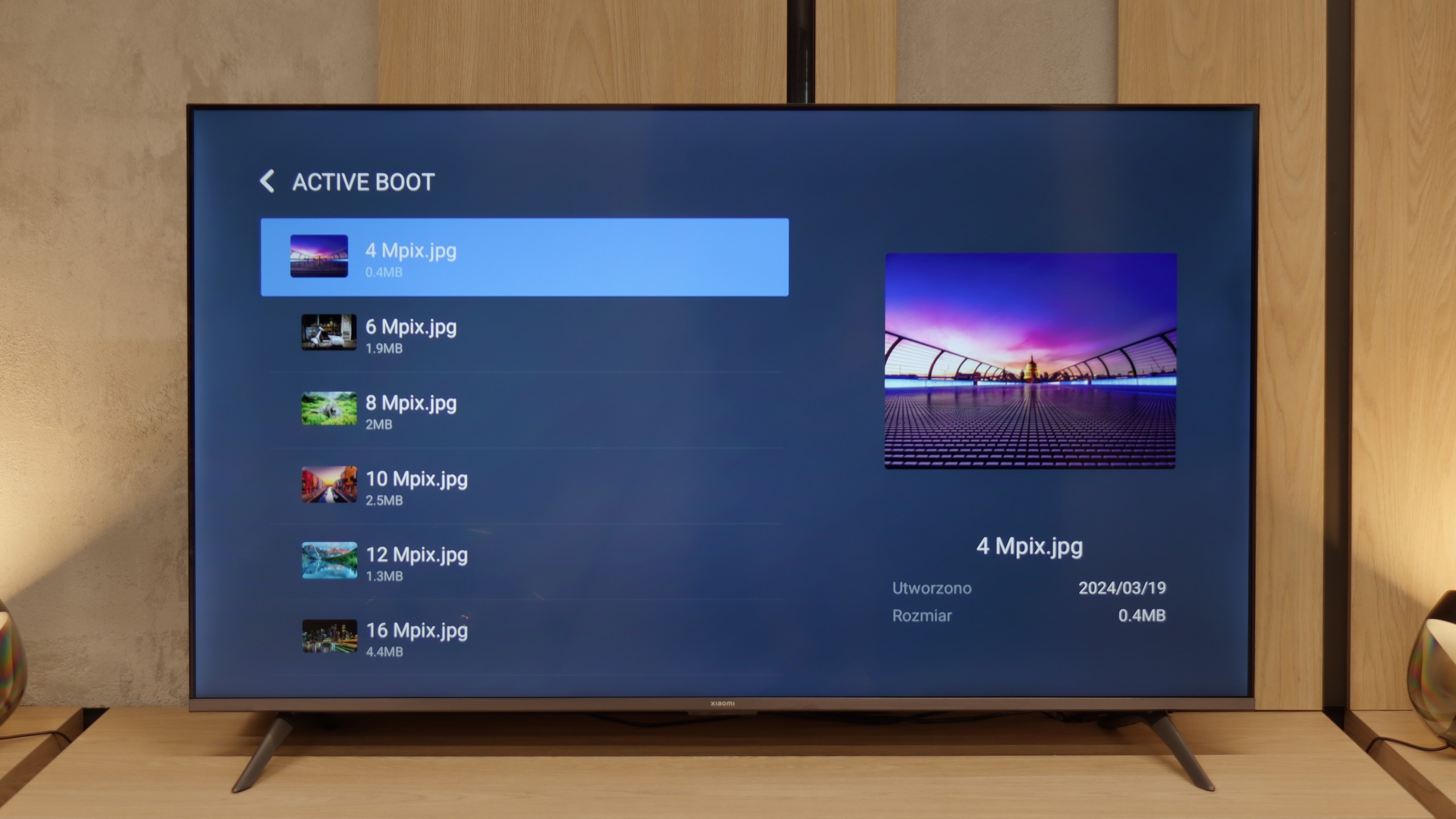
The built-in player in the Samsung Q60D television is one of its significant advantages. It handles most video and audio files used during testing exceptionally well. The only exceptions are the Dolby Vision format, which is not surprising, and less popular codecs. On the plus side, it also supports Polish characters and allows for font colour changes, enhancing user comfort.
The built-in media player in the Xiaomi A Pro 2026 is a real enigma. On one hand, it plays most popular audio and video formats without major issues. On the other hand, it can struggle with basic things like Polish characters. Files with letters such as ą, ł, ć or ś in their names often refuse to open or are displayed incorrectly. This looks strange, as we seemingly have codec support, yet the television simply gets lost on simple matters related to the alphabet. Fortunately, this is not a huge problem, as thanks to Google TV we can simply install another player, e.g. VLC. Then the issue with Polish characters disappears completely, and using multimedia becomes hassle-free.
Apps
8.7/10
9.6/10














































Sound
6.2/10
5/10
- Maximum volume-81dB
- Dolby Digital Plus 7.1
- Dolby True HD 7.1
- Dolby Atmos in Dolby Digital Plus (JOC)
- Dolby Atmos in Dolby True HD
- DTS:X in DTS-HD MA
- DTS-HD Master Audio
When it comes to sound, due to the slim design of the television Samsung Q60D, the audio quality is at an acceptable level, although it does not stand out in any particular way. On the plus side, the sound synchronisation function with a soundbar thanks to Q-Symphony technology allows for a better audio experience. Unfortunately, in terms of codec support, there is a significant issue – the television does not support the DTS format.
Last year, the Xiaomi A Pro 2025 surprised us with really decent sound, considering it is a super budget television. Unfortunately, this year's edition – the A Pro 2026, has let us down across the board. The sound resembles the sensation of the equipment playing from underwater: flat, devoid of any bass or depth. The only upside remains the wide support for audio formats, such as Dolby Atmos or DTS:X, but in practice, it changes very little. If you are considering this television, you must immediately factor in a soundbar, as without it the audio experience will be quite disappointing.
Acoustic Measurements
No acoustic data
81dBC (Max)
75dBC


